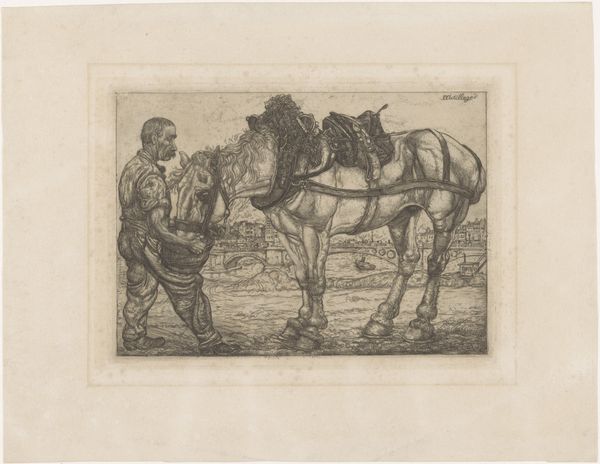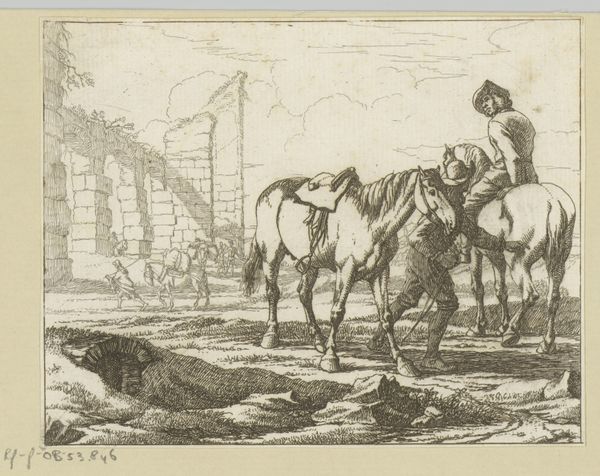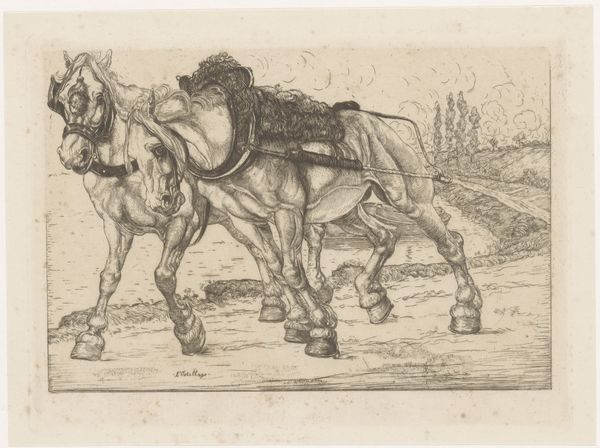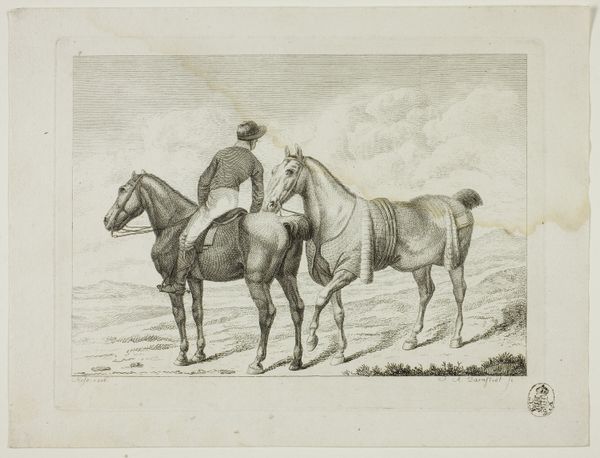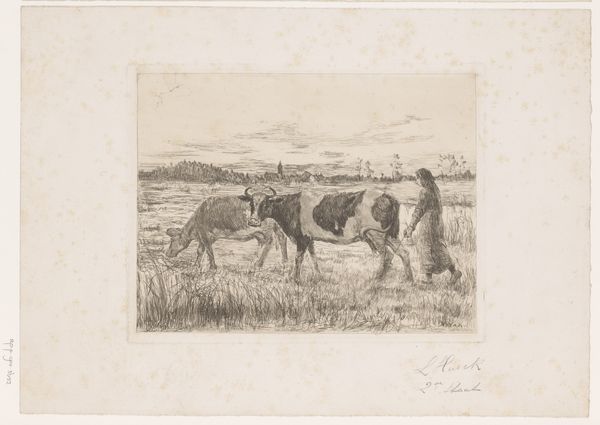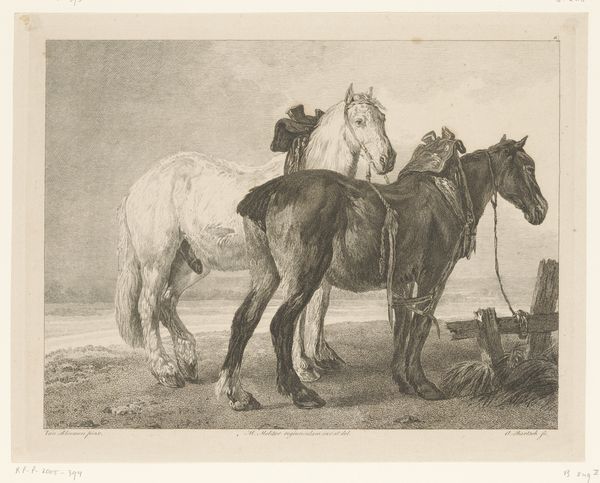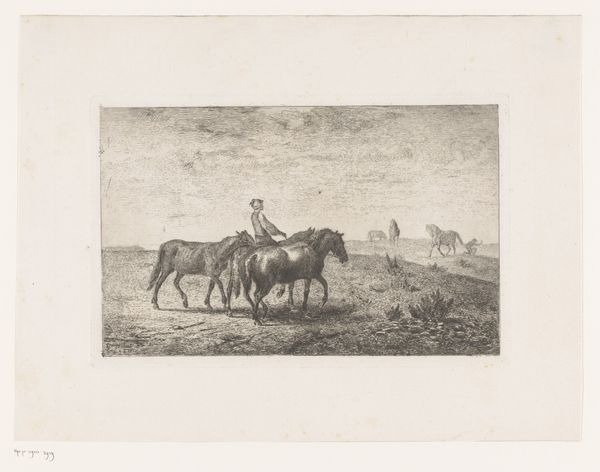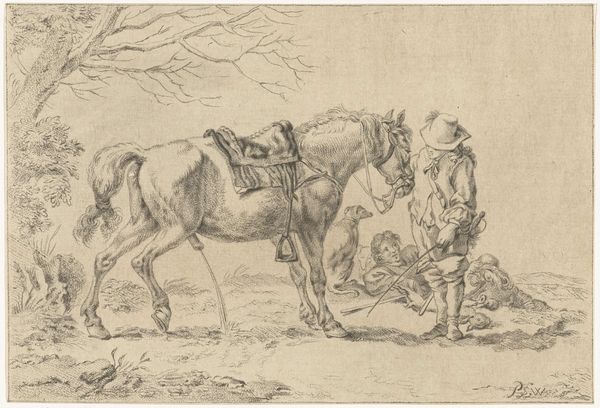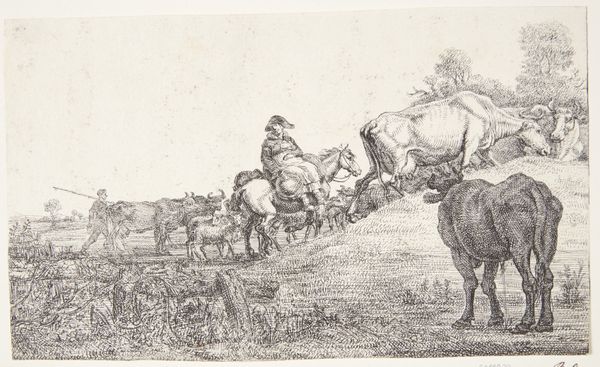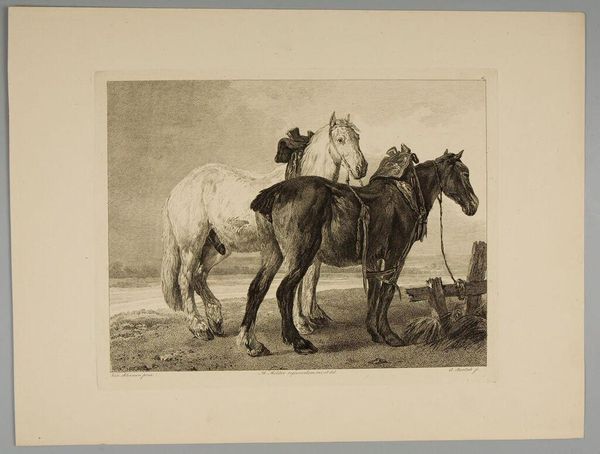
drawing, pencil
#
pencil drawn
#
drawing
#
16_19th-century
#
pencil sketch
#
landscape
#
personal sketchbook
#
pencil
#
horse
#
pencil work
#
genre-painting
#
realism
Dimensions: height 140 mm, width 277 mm
Copyright: Rijks Museum: Open Domain
Editor: So, here we have "Twee ploegende paarden," or "Two Plowing Horses," a pencil drawing by Pieter Dupont, created around 1901. It's a really compelling, realistic scene; the horses especially seem so powerful. What stands out to you? Curator: The rhythmic repetition of forms—the horses' legs, the lines of the ploughed field—it speaks to a cyclical nature, doesn’t it? Think about the ancient symbol of the ouroboros, the snake eating its tail, and what it represents: cycles of life, death, and rebirth. Do you see that mirrored here in the continuous turning of the soil? Editor: That's an interesting connection! I was focusing on the kind of raw, physical labor aspect, but the cycle of renewal adds another layer. Curator: Precisely. Consider also the symbolic weight of the horse across cultures. Often associated with virility, power, and even the sun chariot in some mythologies. What does their grounded role here, yoked to the earth, suggest about humanity's relationship with nature? Editor: Perhaps a co-dependent one? The power of the animals is being harnessed, but they're also providing a vital service. The composition also places the human figure on the periphery, seemingly directing the scene. Curator: Indeed. It's not simply a depiction of labor; it's a potent image of our interconnectedness with the natural world. It speaks volumes about the cultural memory of agrarian societies. Editor: That’s a really insightful reading. I wouldn't have picked up on all of that just from looking at it initially. Curator: Visual symbols carry within them layers of meaning, built up over centuries. Exploring them unlocks a deeper understanding, doesn’t it? Editor: It certainly does. It gives a whole new perspective on what I initially saw as a simple genre scene.
Comments
No comments
Be the first to comment and join the conversation on the ultimate creative platform.
